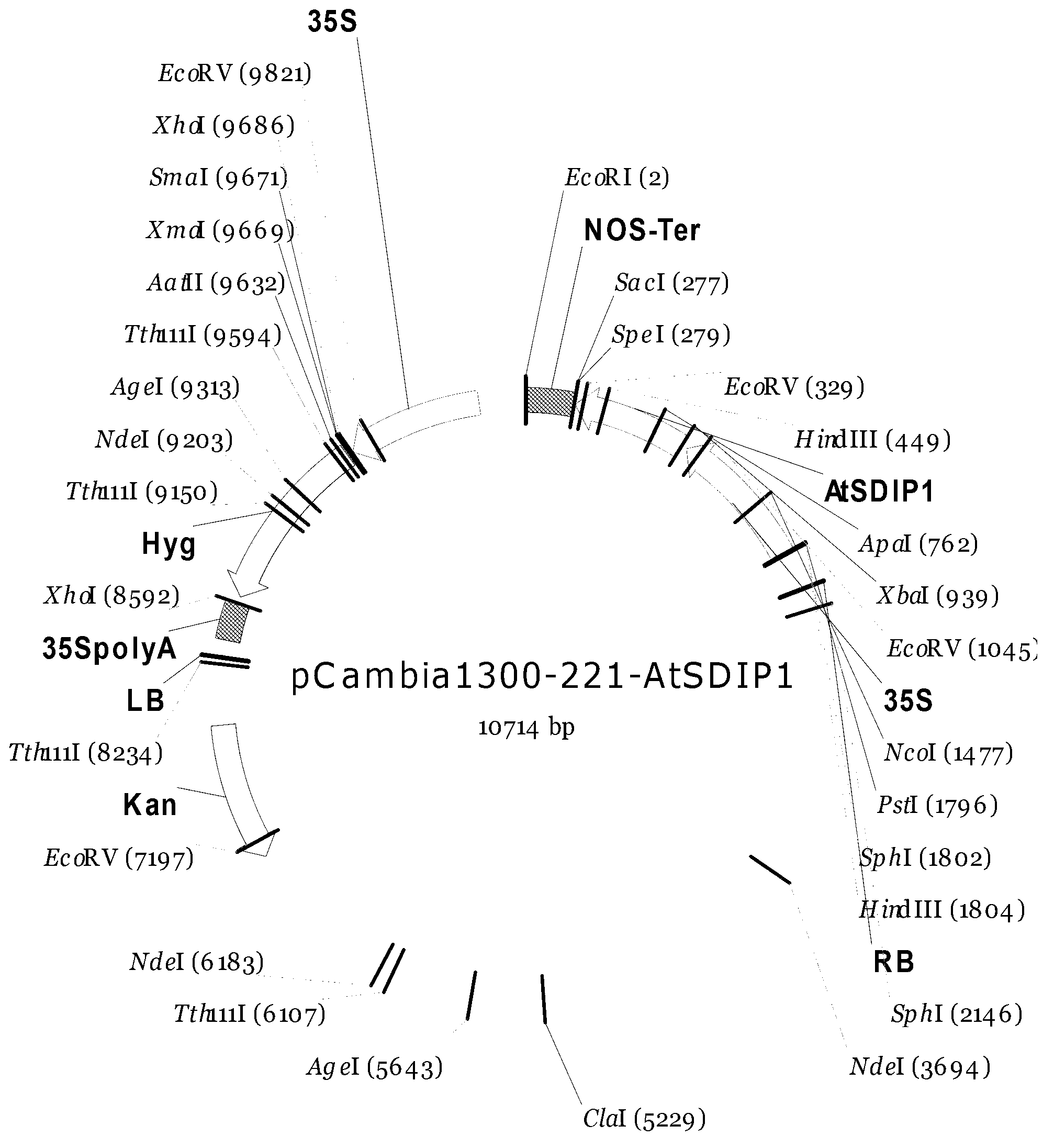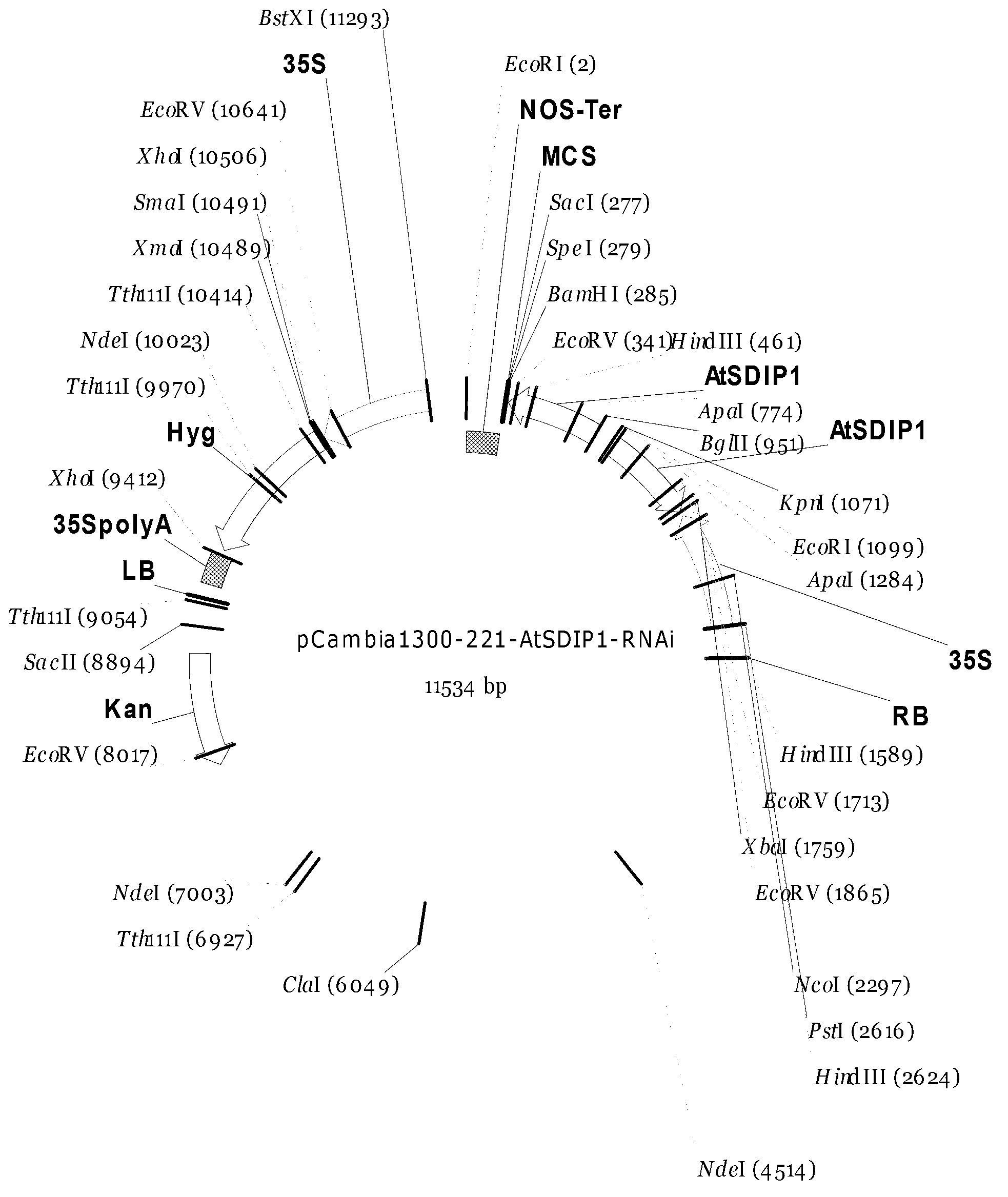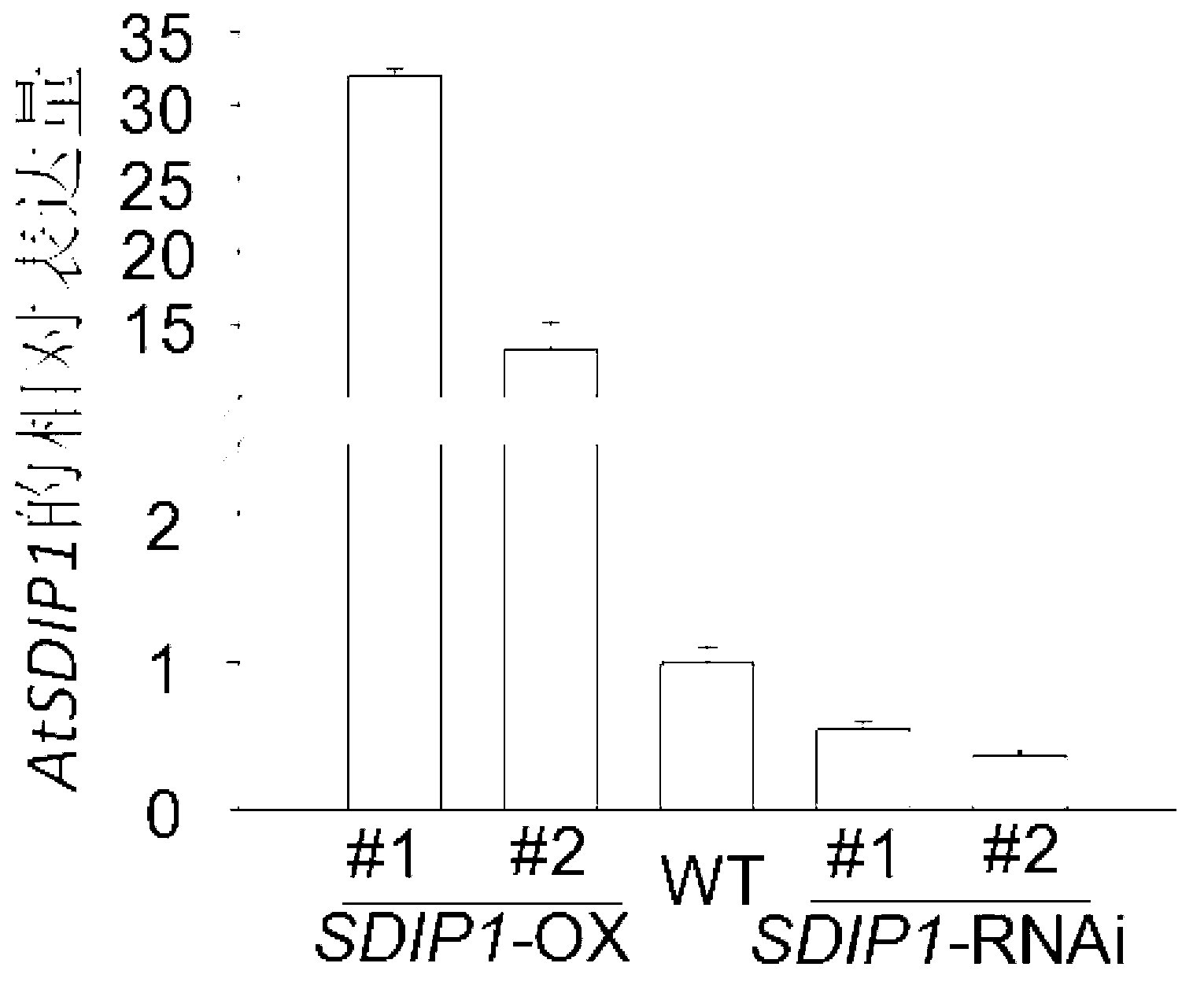Plant salt-tolerance-related protein AtSDIP1, and coding gene and application thereof
A related protein and plant technology, applied in the plant salt tolerance related protein AtSDIP1 and its coding gene and application field, can solve the problems of plant root water absorption difficulty, membrane lipid nucleic acid damage, ion poisoning, etc.
- Summary
- Abstract
- Description
- Claims
- Application Information
AI Technical Summary
Problems solved by technology
Method used
Image
Examples
Embodiment 1
[0101] Embodiment 1, the acquisition of AtSDIP1 gene overexpression plant and AtSDIP1 gene suppression expression plant
[0102] 1. Construction of overexpression vector
[0103] Replace the small fragment between the SmaI and XbaI restriction sites of the vector pCAMBIA1300-221 with the double-stranded DNA molecule shown in the 85th-747th nucleotide of the sequence 2 from the 5' end to obtain the recombinant plasmid pCAMBIA1300-221 - AtSDIP1 (i.e. overexpression vector). The schematic diagram of the structure of the recombinant plasmid pCAMBIA1300-221-AtSDIP1 is shown in figure 1 , AtSDIP1 gene is regulated by 35S double promoter.
[0104] 2. Construction of Inhibition Expression Vector
[0105] The double-stranded DNA molecule shown in sequence 3 of the sequence listing (in sequence 3, nucleotides 1 to 663 from the 5' end is the reverse complementary fragment of the AtSDIP1 gene, and nucleotides 664 to 853 are spacer fragments , the 854th to 1516th nucleotides are the At...
Embodiment 2
[0125] Example 2, Salt tolerance identification of AtSDIP1 gene overexpression plants and AtSDIP1 gene suppression expression plants
[0126] The T of two AtSDIP1 gene overexpression lines (SDIP1-OX#1 strain and SDIP1-OX#2 strain) were randomly selected. 3 For generation seeds, T 3 Substitute seeds, take the seeds of Columbia ecotype Arabidopsis (WT) plants, and take the T of empty vector plants 3 Subsequent salt-tolerance identifications were carried out on the generation seeds:
[0127] 1. Surface sterilize the seeds with 10% bleach, and then wash 3 times with sterile water.
[0128] 2. Group processing
PUM
 Login to View More
Login to View More Abstract
Description
Claims
Application Information
 Login to View More
Login to View More - R&D
- Intellectual Property
- Life Sciences
- Materials
- Tech Scout
- Unparalleled Data Quality
- Higher Quality Content
- 60% Fewer Hallucinations
Browse by: Latest US Patents, China's latest patents, Technical Efficacy Thesaurus, Application Domain, Technology Topic, Popular Technical Reports.
© 2025 PatSnap. All rights reserved.Legal|Privacy policy|Modern Slavery Act Transparency Statement|Sitemap|About US| Contact US: help@patsnap.com



